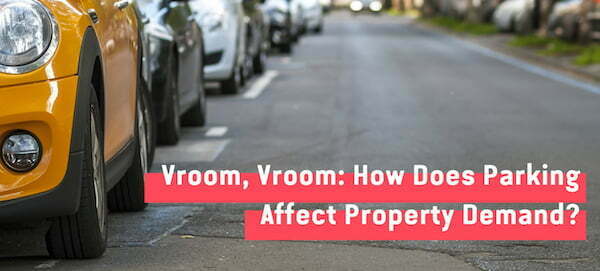Many of us rely on our cars to get around, but how much do we rely on a parking space as part of our digs?
Investing in a property with a parking space could mean the difference between hundreds or thousands of rental dollars each year – providing you buy in the right place. In today’s blog, Think Property & Co unpack the parking conundrum in Melbourne, and explore the real value of having your own parking space.
Is Off-Street Parking Worth It?
In short: usually. According to Allianz, 2011 census data recorded 5,624,100 people in Victoria, and 4,198,371 cars – that’s 0.75 cars for every one person. Parking is – by and large – a necessity for many people, so being able to offer a guaranteed private parking space is a luxury that tenants are willing to pay a premium for. Not only will they pay a premium for a parking space, they may entirely ignore properties without one. Popular property listing sites like Realestate.com.au and Domain allow prospective tenants to search the database for available rentals by filtering out those without car spaces – if there’s nowhere for wheels, it could be an instant ‘no’ from many.
In rare circumstances, parking may be less important to your prospective tenants. Properties located in the thick of buzzing cities where driving is not the norm for tenants may not have as urgent a need for private parking. In fact, it may be in a landlord’s interest to deliberately avoid buying assets with parking in these areas as tenants may be unwilling to pay additional rent for a facility they don’t want or need.
What About On-Street Parking?
On-street parking may involve obtaining – or having the option to obtain – a parking permit from the council. While this doesn’t guarantee the tenant a space, it may exempt them from strict parking rules and mean they can nab premium parking spaces as part of their council arrangement. In some cases, a permit is not required as the street’s parking is unrestricted. Beware though – as more and more areas establish themselves as commuter hotspots, unrestricted parking is becoming increasingly rare.
Residents in Cheltenham who previously enjoyed unrestricted parking found themselves facing a 4-hour limit at all times ahead of the opening of Southland station on the Frankston line.
On-street parking is all well and good for boutique apartment blocks or low-density streets. The issue arises when several parking-deprived apartment blocks pop up in a cluster. The result: hundreds of apartments and hundreds of cars battling for a precious few metres of on-street parking.
In addition, tenants or homeowners may move into a property on the basis that street parking is available, only to discover in a few years time that residents of a new development will soon be guzzling up available street space.
In hotspots like Prahran and South Yarra, we have noticed properties struggling to attract demand from two-car households. Developers of new buildings waive on street parking permits in order to build in the area, leaving tenants stuck for parking in built-up areas. Over in the City of Yarra, obtaining council permits has become increasingly difficult since 2003, when restrictions were put in place in a bid to encourage new builders to provide their own off-street parking. The result has left many households unable to obtain the number of permits they need – not to mention visitor access.

Share Cars and Stackers – What’s The Deal?
If both off-street and on-street parking is unavailable, some developers in higher density areas look to other options to make life easier for residents. Share cars, for example, can bridge the gap between parking and no parking. The concept involves the building itself offering access to shared vehicles for incidental trips. While not a solution for those who drive to work each morning, it can be useful for inner-city or CBD areas where cars are used less frequently.
Another increasingly common feature of modern developments are car stackers. On initial inspection these contraptions seem like a nifty space-saver, yet tenants and buyers remain skeptical – and perhaps with good reason. Indeed, they do enable apartment residents to park their car off-road, but what they don’t allow for is speedy collection of your car. The time taken to operate the system can add significantly impact upon your schedule, and of course, there’s always the concern of a malfunction. Getting stuck in or out of the stacker would mean lost access to your car, or your space. Will tenants pay premiums for such a disruption?
The key takeaway here is that not all parking is created equal. When buying a property to lease or for eventual resale, consider the quality of the parking associated with that property. In general, some parking is better than no parking, but be sure to investigate the true availability (both now and in the future) of that parking. Street parking may be compromised by the construction of new development nearby, or finding a park at 6pm on a weeknight could involve more drama than an episode of The Bachelor. Always do your due diligence. Visit the property at different times of the day and the week, and see how the parking availability stacks up – pun intended.

